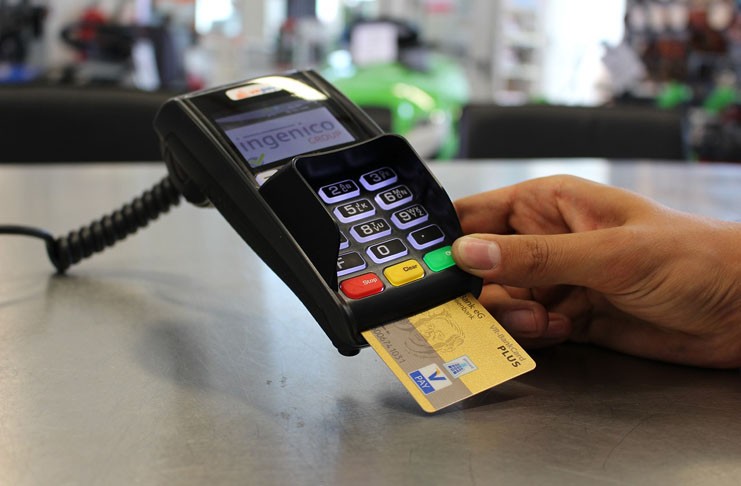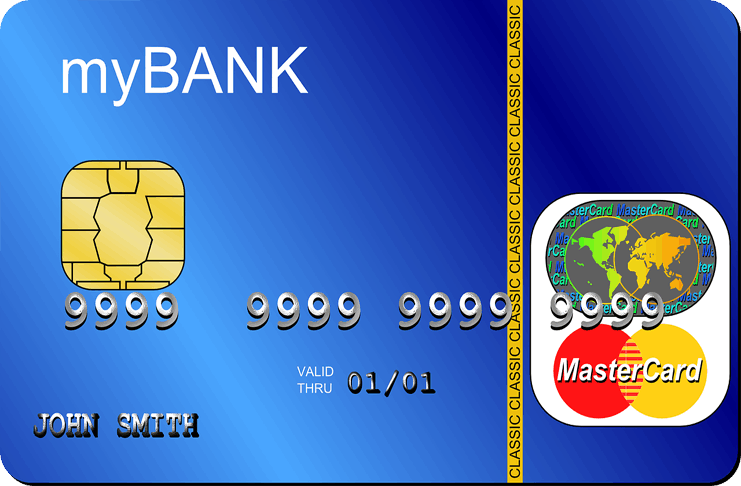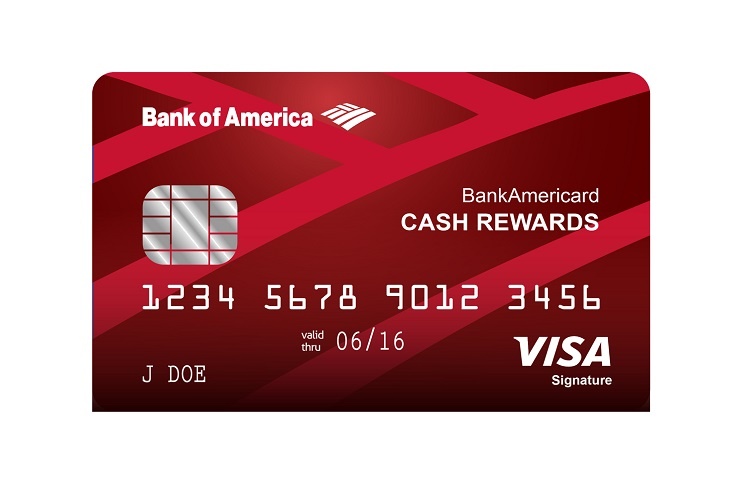Are you intrigued by the world of finance and eager to dive into the realm of credit? Let me take you on a journey where we’ll uncover the secrets of the Citibank Credit Card.
Have you ever wondered what it takes to have one of these shiny symbols of financial prestige in your wallet? Just as a key unlocks a door, understanding the process can make a difference in your financial journey.
The Citibank credit card is not just a piece of plastic but a tool, your ticket to a world where finance ceases to be a mystery and becomes an ally. Are you ready to embark on this journey? Let’s decipher the steps together and discover how to make the credit card your own.
Deciphering the Nature of a Prestigious Financial Instrument
At the heart of financial comfort lies the indispensable financial tool we know as a credit card. Among the various offerings in the market, Citibank’s entry into this sector is a powerful combination of convenience, rewards, and strategic access to credit.
It serves as a vehicle for your transactions, a path to credit, and a source of various benefits. Let’s immerse ourselves in this financial marvel and explore its essence.
A Wide Range of Credit Options
In the world of personal finance, there is no one-size-fits-all solution. Recognizing this, our bank offers a variety of credit card options, each tailored to specific needs and lifestyle preferences. To understand where each one fits, let’s explore:
- Rewards Card: An ideal companion for the avid shopper, designed to turn expenses into rewards.
- Cashback Card: Perfect for the savvy spender looking to benefit from their daily purchases.
- Prestige Card: Tailored for sophisticated individuals, it offers exclusive privileges and high-level benefits.
- PremierMiles Card: A gem for the frequent traveler, accruing miles on every travel expense.
Each option represents a unique path in the financial journey, highlighting the institution’s commitment to meeting consumers’ diverse needs.
Highlighting Unique Offers
What sets these cards apart from the rest? What features make them powerful financial management tools, not just pieces of plastic? Let’s take a look at these unique characteristics that enrich each card:
- Comprehensive Rewards Program: Ensuring your spending habits are rewarded.
- Travel Benefits: Making every journey more rewarding, especially with the PremierMiles Card.
- Cashback Offers: Providing returns on your regular expenses with the Cashback Card.
- Exclusive Privileges: Offering high-end experiences with the Prestige Card.
Understanding these features correctly ensures an enhanced financial journey with a card that is more than just a payment method but a companion that enhances your spending prowess.
The Wisdom Behind Your Choice
Why let your course lead you to this bank in the vast ocean of financial institutions? The answer lies in a combination of factors that make this institution a compelling choice. Unraveling these factors can illuminate the path of your financial journey. Let’s delve into the advantages of opting for this financial giant:
- Robust Infrastructure: With a global reach and advanced technology, accessibility and convenience are at their peak.
- Diversified Portfolio: Caters to various financial needs, from credit cards, loans, investment products, insurance, etc.
- Customer-Centric Approach: Focus on customer satisfaction and personalized financial solutions underscores their commitment to users.
- Reputation and Trust: Their long history and global presence make them reliable financial players.
- Innovative Rewards Programs: Reward customer loyalty through extensive rewards and cashback programs.
- Security Measures: Implement strict security protocols to ensure the protection of customer financial information and transactions.
Unlocking the Door to Financial Access
Entering the world of credit is like opening a door to financial empowerment. However, every door requires a key; in this case, the key is understanding the prerequisites to apply for a credit card from this institution.
Understanding these prerequisites acts as a compass guiding your way to obtaining this financial tool. Let’s delve into the eligibility criteria that pave your path to the application:
- Age Factor: The applicant must be at least 21 years old, financially independent.
- Financial Stability: A stable income source is required to ensure the ability to manage credit.
- Credit Score: Maintaining a decent credit score portrays you as a responsible credit user.
- Residency Status: Both residents and non-residents can apply, but documentation requirements may vary.
Building Your Financial Toolkit
Just as a builder needs the right tools to construct a sturdy tower, you need the correct documents to construct your credit application.
These documents act as bricks that strengthen your application, increasing its chances of approval. So, what are these tools in your financial toolkit? Let’s delve into the necessary documents for a successful application:
- Proof of Identity: A valid passport, driver’s license, or government-issued ID confirming your identity.
- Income Verification: Recent pay stubs, tax returns, or bank statements showing your financial stability.
- Address Verification: Utility bills, lease agreements, or a valid driver’s license confirming your residency status.
- Photographs: Recent passport-sized photographs to add a personal touch to your application.
Navigating Your Financial Journey
Just as a compass guides a ship to its destination, it is necessary to have a detailed map that describes the necessary steps to navigate towards obtaining your credit card. Let’s set sail on this journey and go through the process step by step:
- Embarking on Your Journey: Visit the bank’s official website, download the mobile app, and navigate to the credit card section.
- Choosing Your Vessel: Explore the different types of credit cards available and select the one that best suits your financial goals.
- Docking in the Pier: Click on ‘Apply Now’ and you will be redirected to the application form. Fill in your personal, professional, and income details accurately here.
- Hoisting the Sails: Upload the required documents, such as proof of identity, income, and address. These act as your sails, strengthening your application.
- Setting the Course: Review all the information and attached documents, ensuring all details are correct. This is your course and must be set accurately.
- Embarking on the Journey: Submit your application. Your financial journey has officially begun.
The Crossroads: Online Application vs. In-Person Application
As you embark on your financial journey, you come to a crossroads: should you apply for a credit card online or in person?
Each path offers its own landscape and distinctive features. Let’s delve into the pros and cons of each option to help you make an informed decision:
Online Application
Pros:
- Convenience: Apply from the comfort of your home, anytime, anywhere.
- Fast Processing: Digital platforms are designed to process applications quickly, reducing the waiting time.
Cons:
- Technical Issues: The process may be affected by server issues or internet connectivity problems.
- Impersonal Interaction: Lack of personal guidance may leave some questions unanswered.
Request in Person
Pros:
- Personal Assistance: You receive direct help from a bank representative who can clarify your doubts.
- Verification of Physical Documents: Direct submission ensures an immediate confirmation of document authenticity.
Cons:
- Limited Accessibility: You can only make the request during banking hours, which may require multiple visits.
- Slower Processing: The process may take longer due to manual input and verification of data.
Demystifying the Financial Maze: Interest Rates
Just as a lighthouse guides sailors on a foggy night, understanding the concept of interest rates and APR (Annual Percentage Rate) can help you navigate through the murky labyrinth of credit card finances.
Let’s shed light on these integral components of your financial journey:
- Interest Rates: This is the cost you pay for borrowing money, expressed as a percentage of the amount borrowed. As of the date of this writing, the typical interest rate for credit cards ranges between 14% and 24% annually, varying based on the cardholder’s creditworthiness and card type.
- APR (Annual Percentage Rate): This is a more comprehensive measure that encompasses the interest rate and any additional charges or fees you may incur over a year. It provides you with a clearer picture of the actual cost of borrowing. The APR for credit cards usually ranges between 15% and 25% annually, although it can be higher or lower depending on the card and user’s credit score.
Navigating Financial Waters: Comparing Interest Rates
When embarking on the journey towards financial independence, knowledge is the compass that guides you.
Understanding how a bank’s interest rates stack up against industry standards can be your guiding star in the vast ocean of credit cards. Let’s shed some light by comparing Citibank’s credit card interest rates with the industry standard:
- Citibank’s Position: Known for its competitive approach, this esteemed financial institution often offers interest rates in line with or slightly lower than the industry average. However, the exact rate varies depending on the type of card and the user’s creditworthiness.
- Industry Landscape: Typically, credit card interest rates across the industry can range between 14% and 24% annually, depending on the card and the applicant’s credit score.
Navigating through Communication Channels
Every journey starts with a single step. In this case, that step is reaching out to the appropriate communication channels of your financial institution. Here’s your map:
- Requesting Assistance: It’s as simple as dialing a number to access a wealth of information and support. Assistance is just a phone call away to provide you with general customer support or specific inquiries regarding credit card applications. You can also visit their website for comprehensive information.
- Zero Point for Inquiries: Sometimes, traditional methods are the best. For those who prefer face-to-face interactions or handling matters through traditional mail, we have the physical addresses of your financial ally.
Deciphering Your Financial Story
A credit card statement may seem like alien language at first. But don’t worry, once you grasp the basics, it will be as simple as reading your favorite book.
Remember, knowledge is power, and understanding your credit card statement is a fundamental part of your financial journey.
- Understanding the Billing Cycle: The statement period lasts from 28 to 31 days. The dates will indicate when the billing cycle begins and ends.
- Total Credit Limit and Available Credit: These indicate your borrowing capacity. The total credit limit is the maximum amount you can charge to your card. Available credit is the remaining amount you can still utilize.
- Outstanding Balance: The amount from previous billing periods that remains unpaid. Pay attention to this as it may accrue interest.
- Transaction Details: A complete list of your expenses during the billing cycle. It is a detailed record of where your money is going.
- Accrued Rewards: Many cards offer reward points. You will find details on the rewards you have earned during the billing cycle.
Unraveling Fees, Charges, and Payment Terms
Navigating the maze of fees, charges, and payment terms can feel like deciphering hieroglyphics.
However, a solid understanding of these terms can help you make more effective use of your credit card, promoting sound financial decisions. So, let’s delve into this world, shall we?
- Annual Fee: It’s an annual charge for the privilege of having the card. It may be waived under certain conditions or during the card’s first year of membership.
- Interest Charges: If you carry a balance from one month to the next, you’ll be charged interest. The Annual Percentage Rate (APR) is the annual interest rate charged on amounts not paid in full by the payment due date.
- Late Payment Fee: If your payment arrives after the due date, you may incur a late payment fee. It’s crucial to know when your payments are due and ensure they are made on time.
- Balance Transfer Fee: Typically, a fee is charged if you transfer a balance from another card. The amount may vary based on the transferred balance.
- Foreign Transaction Fee: When you use your card abroad or for purchases in foreign currency, this fee is often applied.
Responsabilidad se Une a la Conveniencia: Utilizando tu Tarjeta de Crédito de Manera Inteligente
Ya sea que sea la primera vez que tienes una tarjeta de crédito o simplemente estés buscando formas de optimizar tus hábitos financieros, utilizar tu tarjeta de manera responsable es fundamental.
Comprender las reglas puede marcar la diferencia entre una buena salud financiera y caer en una trampa de deudas. Aquí tienes algunos consejos para utilizar tu tarjeta de manera inteligente y mantener un buen historial crediticio.
- Controla tus Gastos: Presta atención a cuánto estás gastando en tu tarjeta de crédito y asegúrate de que se ajuste a tu presupuesto. Controla regularmente tu cuenta para mantenerte actualizado y evitar sorpresas.
- Paga a Tiempo: Siempre paga tu factura de tarjeta de crédito en o antes de la fecha de vencimiento para evitar cargos por pago tardío innecesarios y posibles daños a tu historial crediticio.
- Pagos del Saldo Total: Intenta pagar todo tu saldo cada mes. Si no es posible, paga más que el monto mínimo requerido para minimizar los cargos por intereses.
- Utiliza el Crédito de manera Inteligente: Aunque usar tu tarjeta para todas las compras puede ser tentador, utiliza tu crédito de manera prudente y para compras necesarias. Recuerda, el crédito no es dinero “extra”.
- Comprende tu Límite de Crédito: Sé consciente de tu límite de crédito y trata de no superar el 30% del mismo. Un alto nivel de utilización del crédito puede tener un impacto negativo en tu historial crediticio.
Caution and Awareness: Navigating the Financial Landscape Responsibly
While credit cards offer significant advantages and convenience, it is essential to understand that these benefits require careful use.
Adopting a prudent approach to credit usage ensures the advantages of being a credit card holder and the long-term preservation of solid financial health.
- Responsible Credit Usage: The freedom of a credit card should not translate into irresponsible spending. Make sure to make thoughtful and affordable purchases, setting a spending limit that fits your budget.
- Avoiding Debt Accumulation: It is all too easy to fall into a debt trap if you are not careful. Always strive to pay your balance in full and on time each month, or at least pay more than the minimum required amount.
Understanding the potential risks and responsibilities associated with the use of credit cards is equally crucial.
- Impact on Credit History: Irresponsible credit card use, such as missed or late payments, can severely impact your credit history, affecting your future prospects for credit approval and loans.
- Debt Potential: The convenience of a credit card can lead to overspending, resulting in significant debt accumulation if not carefully managed.
- Fraud Risks: Credit cards are susceptible to fraud just like all financial tools. It is essential to regularly monitor your account and immediately report any suspicious activity.
Exploring Other Credit Card Options
While the Citibank Credit Card is a great tool for many, it’s important to understand other options that may better suit your financial needs and lifestyle.
Let’s look at some of these alternatives:
- Chase Sapphire Preferred Card: Perfect for frequent travelers, with excellent rewards points for dining and travel.
- American Express Gold Card: Offers lucrative rewards for dining and supermarket purchases, making it a great choice for foodies and families.
- Capital One Quicksilver Cash Rewards Credit Card: An ideal choice for simple and straightforward cash back rewards on all purchases.
- Discover it® Cash Back: Offers rotating categories with high cashback percentages, maximizing your savings in different spending areas each quarter.
- Bank of America® Premium Rewards® credit card: Provides balanced rewards for various spending categories, making it a versatile option.
- Wells Fargo Propel American Express® card: An excellent choice for those seeking solid rewards in categories like travel, dining, and gas stations without an annual fee.
- U.S. Bank Altitude® Go Visa Signature® Card: This card offers generous rewards on dining, including takeout and delivery, as well as valuable points on streaming services and supermarket purchases.
- Citi® Double Cash Card: Operated by the same provider, this Citibank alternative gives you double cash back on every purchase, ideal for those looking for a simple yet rewarding cash back structure.
Conclusion: Empowering Your Financial Journey with a Citibank Credit Card
In summary, navigating the process of applying for a Citibank Credit Card doesn’t have to be complicated.
The key lies in understanding the specific requirements, being prepared with the right documentation, and diligently following the application steps. Remember, choosing a credit card is an important financial decision, and ensuring it fits your spending habits and financial goals is crucial.
Furthermore, thoroughly understanding interest rates, fees, and how to use your card responsibly will set you up for long-term success. The Citibank Credit Card provides a reliable and flexible financial tool to make your money work smarter.
Read also – JetBlue Mastercard Credit Card from Banco Popular – Learn How to Apply
Read also – FONACOT Credit Card – Benefits and How to Apply









